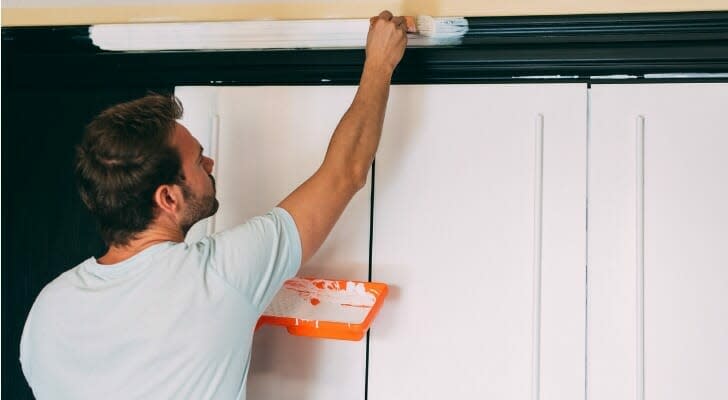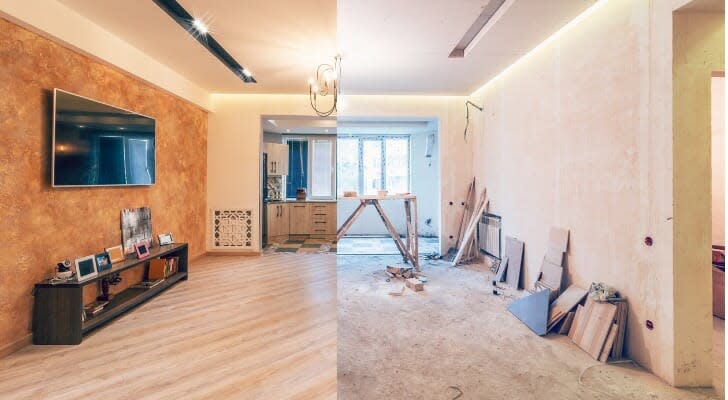What Does ARV Mean in Real Estate?
Real estate investors often consider the after-repair value, or ARV, of a piece of real estate when deciding whether a deal is worth pursuing. The ARV is an estimate of what the property will be worth after all the needed repairs, renovations and upgrades have been done. It is the sum of the cost of the property and the value of the repairs. Knowing this key real estate metric is especially helpful to investors and lenders.
The margin between the ARV and the cost of the property, including the cost of the repairs and other work, represents the potential profit on the investment. Therefore, ARV can help investors select an appropriate method of financing the property purchase as well as the best exit strategy. For instance, it can direct investors toward a fix-and-flip approach, which normally means selling within a year, or a buy-and-hold approach that may involve owning a property indefinitely. Lenders can use ARV to decide whether to fund a project, and the ARV can also suggest the ultimate selling price of a renovated property.
Figuring ARV
ARV is an estimate based on the investor’s assessment of the repairs and upgrades that will be necessary, the likely cost of those improvements and the effect on the value of the property. Making this estimate requires significant knowledge about local market conditions as well as the availability and pricing of local contractors.
The formula for ARV is:
ARV = Purchase price + Value of renovations
To calculate ARV requires placing a value on the property as is. This can be done by hiring a professional appraiser, or by examining comparable properties listed for sale. When looking at comparable properties, it’s important to look for properties that have similar locations, sizes, ages, condition and other characteristics. If an investor finds that similar properties in similar condition are listing and selling for $150,000 on average, that is the likely estimate for this property’s as-is value.
After estimating the as-is value, the investor estimates the cost to perform the needed repairs and renovations. For example, if the property needs a new roof, new carpet and kitchen updates, the estimated cost for these repairs may be $30,000.
Next the investor looks for listings and sales of comparable properties that have already been upgraded. If the average value of these comparable properties is $225,000, that is the ARV for this property as well. In this case, the value of the repairs is $75,000. That is the $225,000 value of comparable already-repaired homes, minus the as-is property value of $150,000. Since the cost of the repairs is $30,000 and the value of the repairs is $75,000 that indicates a $45,000 potential profit margin and suggests this is a deal worth considering.
Using ARV
After calculating the ARV, an investor can use it to help suggest a price to offer to acquire a property. In order to this well requires considering much more than the value of the repairs. A successful real estate investment decision also takes into account carrying costs such as interest, insurance and taxes, as well as repair costs.
One approach uses what is called the 70% rule to perform initial screening on investment opportunities. The 70% rule calls for an investor to put no more than 70% of the ARV into a property. This includes the purchase price as well as the cost of repairs. According to this rule, if a property’s ARV will be $225,000 after $30,000 in repairs, the investor should not pay more than $127,500 to acquire it. That amount is equal to 70% of $225,000, or $157,500, minus $30,000 for repairs.
The Bottom Line
ARV, or after repair value, is a real estate investing term used to describe an estimate of what a property will be worth after needed repairs, upgrades and renovations are done. Knowing the ARV of a potential investment property helps an investor decided whether the deal if of interest how much to offer to acquire the property, what type of financing to secure and which exit strategy makes the most sense.
Real Estate Buying Tips
Consider working with an experienced financial advisor if you are calculating operating cash flow or evaluating a company for potential investment. Finding the right financial advisor who fits your needs doesn’t have to be hard. SmartAsset’s free tool matches you with financial advisors in your area in five minutes. If you’re ready to be matched with local advisors who will help you achieve your financial goals, get started now.
When considering a real estate purchase it’s important to know whether you can truly afford a property. Using a free calculator can give you a quick estimate of whether a residence fits into your financial plan.
Another real estate investing term — annual rental value — has the same initials but a different meaning. Annual rental value is the amount that it would cost to occupy a property or a space for a year. It might not be the same as the amount of rent that a tenant would pay to rent the property. Instead, annual rental value is based on comparable properties and includes other costs of occupancy. Investors may use annual rental value when estimating the cost to occupy a space or a property.
Photo credit: ©iStock.com/Chainarong Prasertthai, ©iStock.com/David-Prado, ©iStock.com/eranicle
The post What Does ARV Mean in Real Estate? appeared first on SmartAsset Blog.




